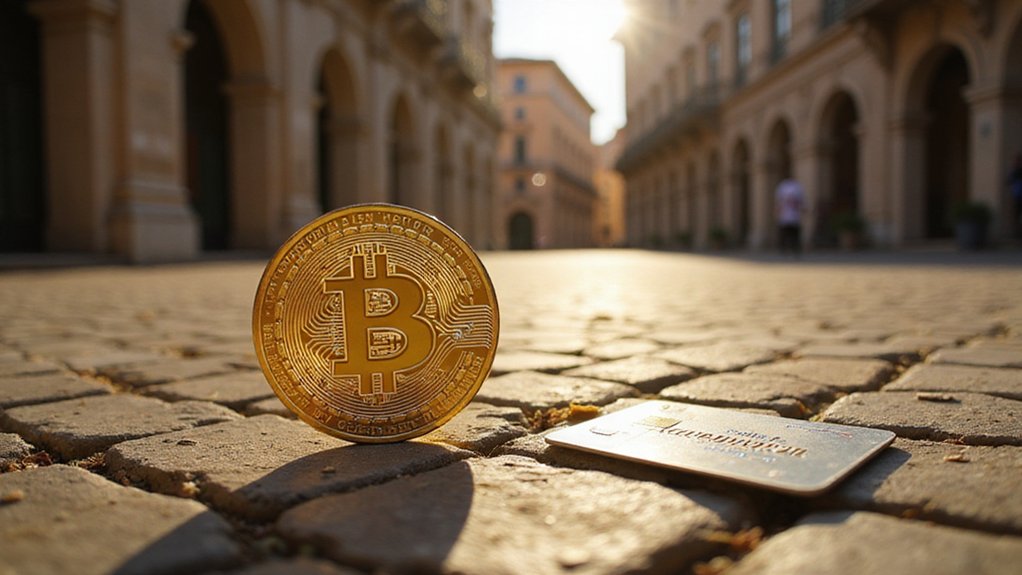While traditional banks have spent decades perfecting the art of charging fees for the privilege of accessing one’s own money, crypto cards have quietly emerged as the unlikely champions of Europe’s micro-spending revolution. The numbers tell a compelling story: a 15% surge in newly ordered crypto cards across Europe in 2025, with these digital upstarts now commanding 45% of transactions under 10 euros—territory previously dominated by cash and conventional banking instruments.
The demographic driving this shift should surprise no one familiar with financial innovation patterns. Tech-savvy consumers, those digital natives who grew up questioning why transferring money should cost more than streaming Netflix, have embraced crypto cards for their streamlined efficiency. With average transaction values hovering around 23.7 euros compared to traditional cards’ 33.6 euros, crypto cards have carved out a distinctive niche in frequent, smaller purchases.
What’s particularly striking is how closely crypto card spending mirrors traditional consumer behavior while outpacing it in key areas. Groceries account for 59% of crypto card transactions (compared to 54% for traditional cards), while dining and entertainment capture 19%—suggesting these aren’t merely speculative tools but genuine payment instruments. The fact that stablecoins represent 73% of crypto card transactions indicates users prioritize functionality over cryptocurrency evangelism.
Perhaps most telling is the digital divide: crypto card users conduct 40% of their payments online, nearly double the eurozone’s 21% average for traditional cards. This isn’t merely correlation but causation—crypto card holders demonstrate a fundamental comfort with digital-first financial solutions that traditional banks struggle to match.
The competitive pressure facing established financial institutions becomes clear when considering transaction processing speed and fees. While banks continue extracting profits from micro-transactions through various charges, crypto cards offer near-instantaneous processing with minimal fees. For transactions under 50 euros, this represents an existential challenge to traditional banking models.
The revolution isn’t coming—it’s already here, one 10-euro grocery purchase at a time. Traditional banks, having spent years dismissing cryptocurrency as speculative novelty, now find themselves scrambling to innovate against competitors who built their infrastructure around the very digital-first principles that define modern consumer expectations. The 2025 U.S. Senate’s GENIUS Act promises to further accelerate this transformation by establishing comprehensive regulatory frameworks for stablecoins, potentially legitimizing the very digital payment infrastructure that crypto cards rely upon.









